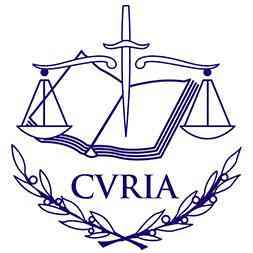By Leo, Liza and Matteo


Source: ESG Risk Management: How to Conduct Risk Assessments, Analyze and Prioritize
Amongst its most important priorities, ESMA has identified the aim to tackle ‘greenwashing’. Enforcing the Sustainable Finance Disclosure Regulation 2019/2088 (“SFDR”) is a relevant tool for that purpose. This blog post will set forth how the tasks conferred to ESMA under the SFDR will likely prove themselves to be insufficient. Expanding the authority’s tasks may be an effective step, but ESMA cannot act with full discretion.
Financial greenwashing
The term greenwashing generally refers to companies presenting their business activities as more sustainable than they actually are. The increased demand for sustainable products has led financial operators to capitalise on the “green” inclinations of their investors. This has resulted in a growing number of companies making unsubstantiated claims about their “green” products. As a result, investors have come to buy financial assets that only appear climate-friendly Greenwashing hinders the financial sector as it harms the confidence of shareholders in green products. Facing greenwashing in the financial sector is challenging especially because of the risk of regulatory arbitrage, as ESMA pointed out. Indeed, Member States apply different rules to define “green” financial products. Hence, the regulated companies may establish their registered offices in countries with softer regulations.
The EU Sustainable Finance Framework: information disclosure
In a broader effort to increase the supply and demand of green capital, the European Commission launched the 2018 Action Plan “Financing Sustainable Growth”. The plan consists of three building blocks: (1) a taxonomy of sustainable activities, (2) disclosure requirements for financial and non-financial companies and (3) investment tools such as benchmarks, standards and labels. The second building block tackles greenwashing as it aims
to provide investors with the necessary environmental information to make informed and sustainable decisions on the market.

Source: Strategy for Financing the Transition to a Sustainable Economy
The Sustainable Finance Disclosure Regulation
A key contributor to the Commission’s second building block has been the Sustainable Finance Disclosure Regulation 2019/2088. The provisions of the SFDR entered into force in 2021 and impose extensive sustainability disclosure requirements on a number of financial institutions such as banks. For this purpose, the SFDR defines various categories of financial products, plus “sustainable investments”. These categories vary from initiatives without any climate-friendly considerations to those with specified environmental objectives. Overall, the regulation aims to increase transparency, maintain a level playing field within the EU and address the issue of greenwashing.
As ESMA is one of the three European Supervisory Authorities (“ESAs”), it operates within the ESA Joint Committee. This Joint Committee received a mandate to review and revise the Regulatory Technical Standards (“RTS”) under the SFDR. In February 2021, the ESAs accordingly presented their final report on draft RTS regarding the content, methodologies and presentation of sustainability-related disclosures. Currently, the Joint Committee is still working on finalizing its draft RTS. It is expected that the ESAs will issue a Final Report before November 2023.
The role of ESMA
Currently, the SFDR does not name ESMA as the sole EU regulatory supervisor. As the supervision and enforcement of the SFDR is a task for national competent authorities (NCAs), ESMA is bound by a shared enforcement system: whilst ESMA can establish RTS under the SFDR, only NCAs can sanction financial operators in case of non-compliance. Even in the absence of regulatory arbitrage at the level of NCAs, this could lead to an ineffective approach towards greenwashing.
Indeed, some argue that the regulation lacks clarity. The regulation does not clearly define either “sustainable investments” or the abovementioned categories of financial products. The EU Commission recently released a Q&A to define sustainable investments, but the Commission’s answers have been considered “broad and neutral”. The SFDR may be ineffective in the absence of a clear definition of legal notions such as “sustainable investments” as investors may be unable to assess whether an investment is indeed green. Consequently, financial institutions may greenwash by indicating an investment as green even if its sustainability is debatable. Indeed, some have already raised concerns about potential greenwashing effects arising from the SFDR unclarity.
An unclear Regulation like the SFDR may cause different interpretations of both the “sustainable investments” and the financial products’ categories across the NCAs. It has been argued that ESMA should be appointed as the sole supervisor and enforcer of the SFDR to ensure EU supervisory harmonisation and to increase regulatory harmonisation. This situation may also result in national interventions aiming to define sustainable investments and the abovementioned financial products’ categories. These interventions would harm the harmonisation process and be an obstacle to a sole EU supervisor. Alternatively, ESMA could define the abovementioned unclear notions to properly enforce the SFDR. However, agencies, including ESMA, are subject to some constraints under the New Delegation Doctrine, that developed the Meroni Doctrine.

Source: EU Institution: Court of Justice of the European Union (CJEU)
The 1958 Meroni Doctrine stated that European institutions can delegate powers to agencies, but the latter cannot have any discretion in applying these powers. Consequently, agencies cannot be delegated any regulatory power. Instead, they can only exercise “clearly defined executive powers”. However, the Court of Justice of the European Union currently supports more extensive delegations of powers to the EU agencies. Indeed, the 2014 New Delegation Doctrine ensured that EU agencies can make legally binding decisions. Nonetheless, the content of such decisions must be specific, precise conditions and criteria must limit the authorities’ discretion, and the legally-binding measures must allow for judicial review. Compared to the Meroni Doctrine, the New Delegation Doctrine seems to incentivise the delegation of regulatory powers to the EU agencies. Still, ESMA cannot be delegated full discretionary powers to take legally-binding measures in order to address greenwashing. This principle would limit ESMA’s discretion to define sustainable investments and the various financial products considered by the SFDR. Still, there is ground for an effective extension of ESMA’s supervisory tasks under the New Delegation Doctrine
